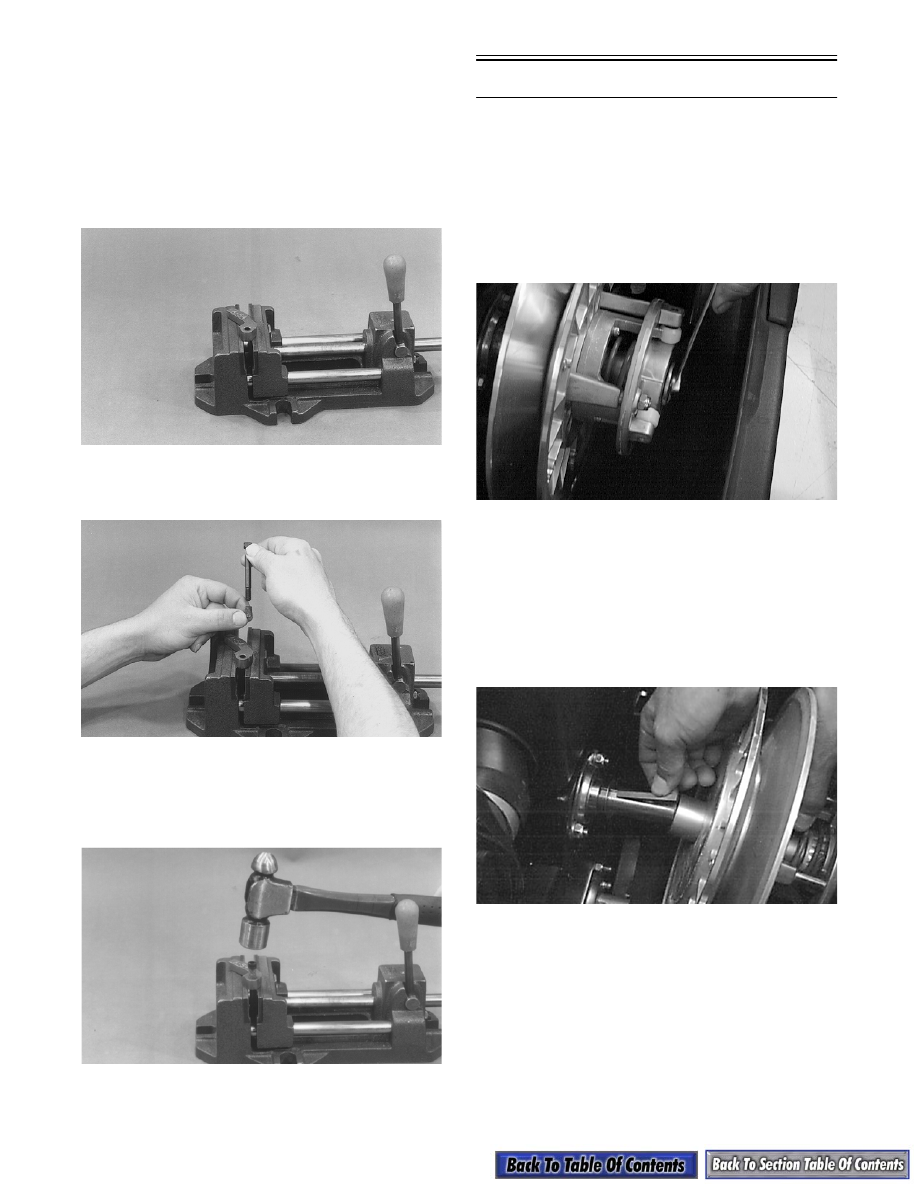Snowmobile Arctic Cat (2002 year). Manual - part 113

8-10
6. Either test drive the snowmobile or run the engine
for five minutes; then tighten the drive clutch bolt
to 6.9-7.6 kg-m (50-55 ft-lb).
REPLACING CAM ARM BUSHINGS
1. Using a vise, spread the jaws just enough to allow
room for the bushing to pass between.
2. Position the cam arm over the spread jaws.
AM094
3. Slide a new bushing onto one of the cam arm pins;
then position the pin through the cam arm bushing.
AM095
4. Using the new bushing as a tool, drive the worn
bushing from the cam arm. When the head of the
cam arm pin contacts the cam arm, the new
bushing will be properly seated.
AM096
Driven Pulley
REMOVING
1. Open the hood; then open the belt guard.
2. Remove the drive belt.
3. Remove the cap screw and washer securing the
driven pulley; then account for and note the
position of any alignment washers.
SC013D
4. Slide the driven pulley off the driven shaft; then
remove pulley from the engine compartment.
NOTE: If the driven pulley is tight on the shaft,
pull the driven pulley off using the Driven Pulley
Puller (p/n 0744-023).
5. Remove the key, alignment washers, and stub
shaft from the driven shaft.
AF120D